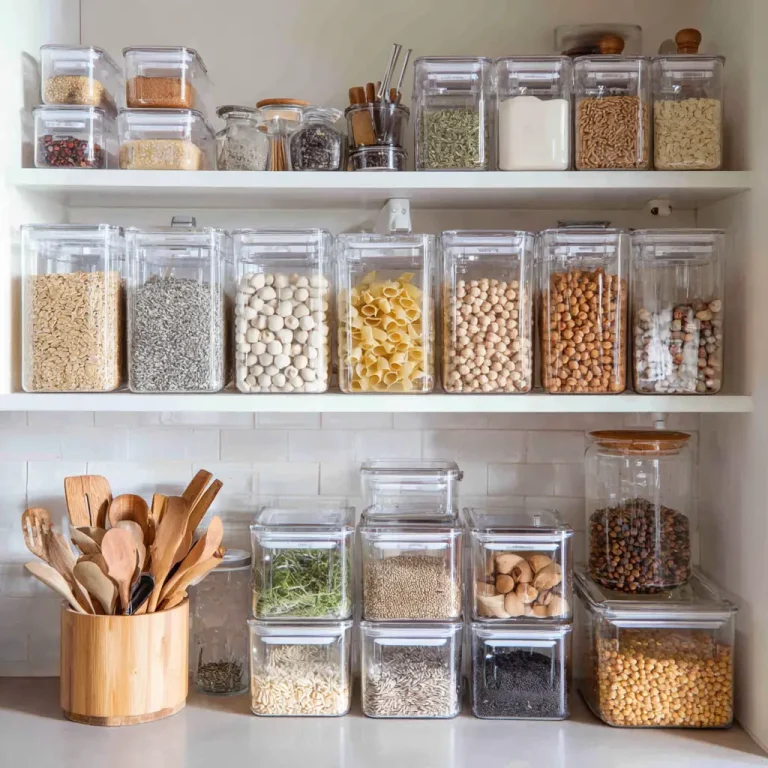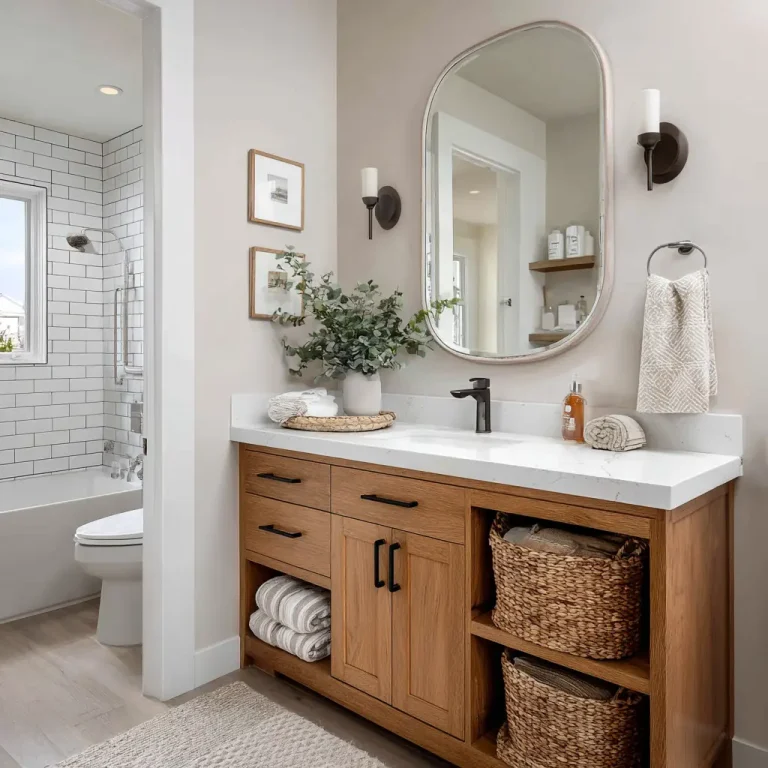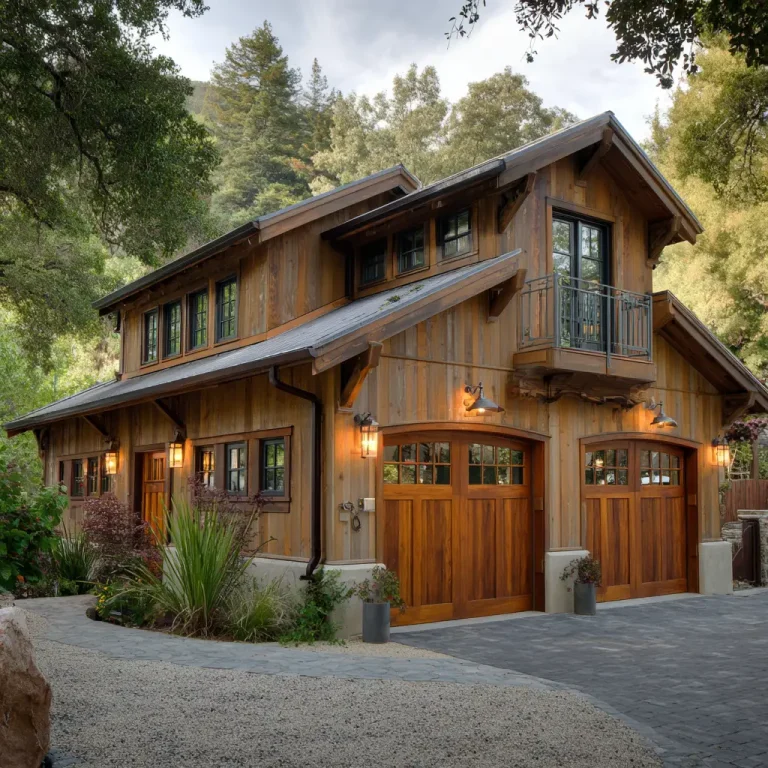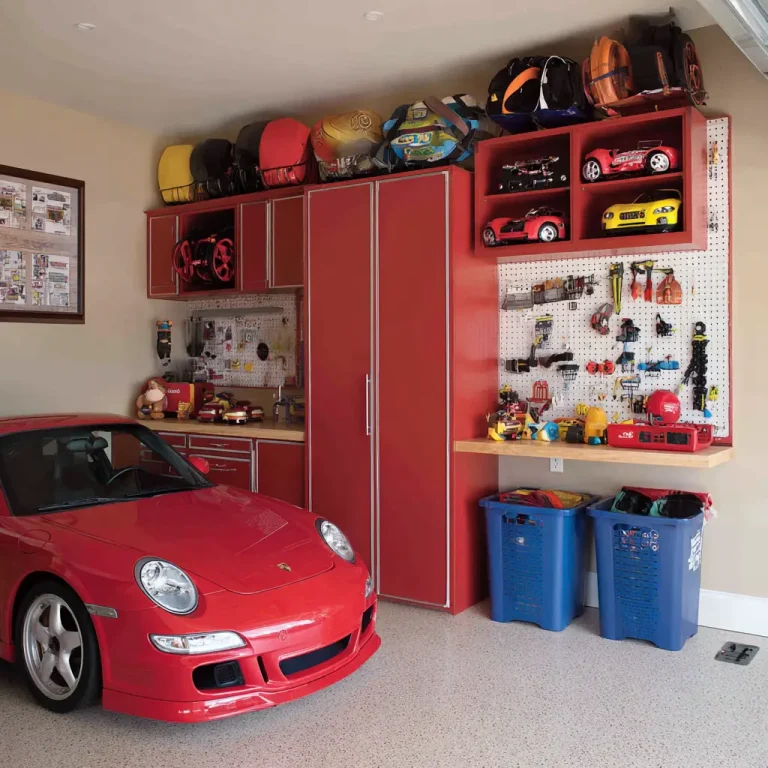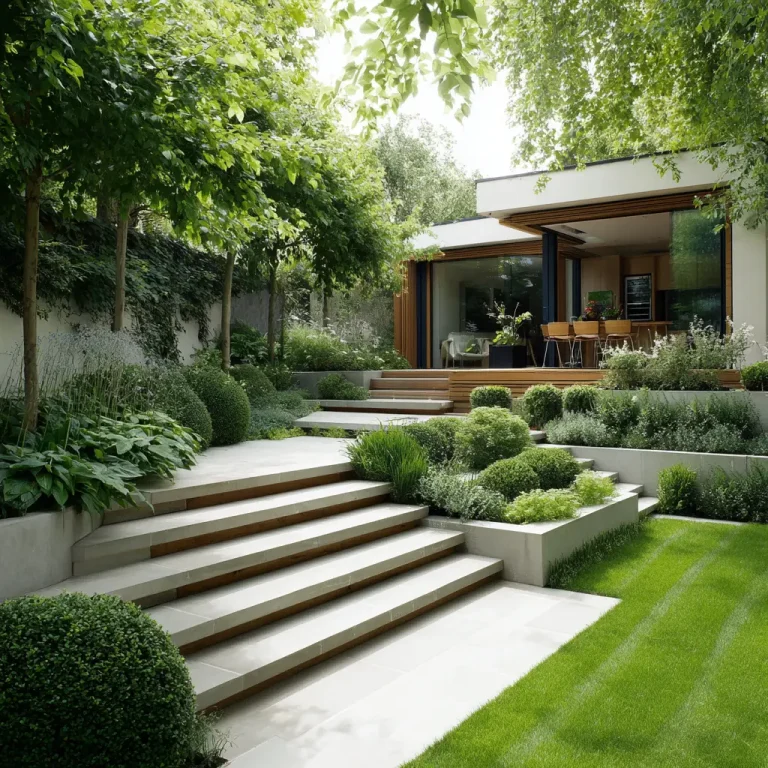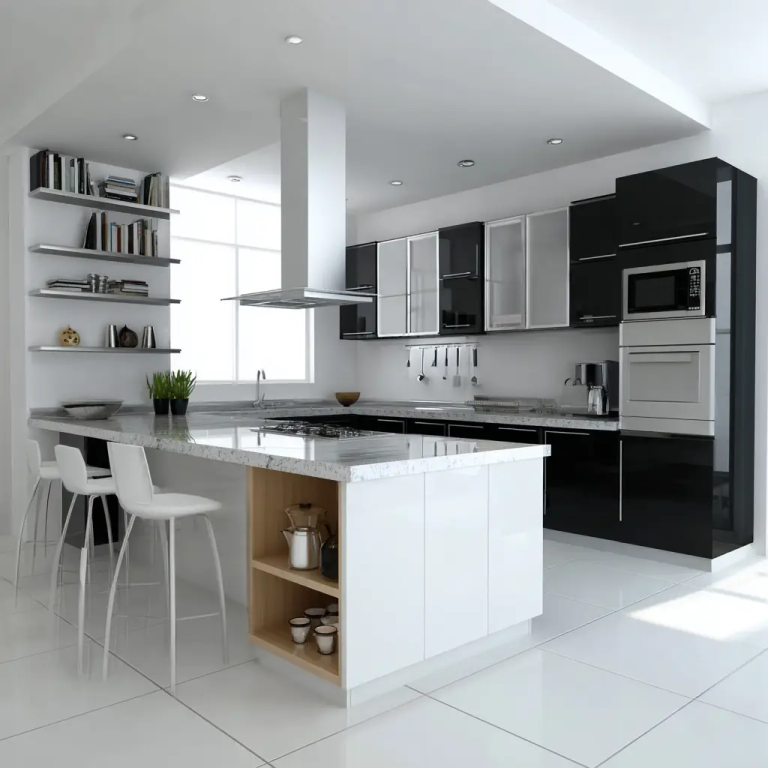20 Space-Saving Bedroom Ideas for Small Rooms
Creating a cozy, stylish bedroom in a small space is entirely possible with thoughtful planning and creative solutions. The key is making the most of every inch, visually opening up the room, and reducing clutter. Whether you’re designing a master bedroom, guest space, or studio apartment nook, these ideas will help you maximize comfort and function without compromising on design.
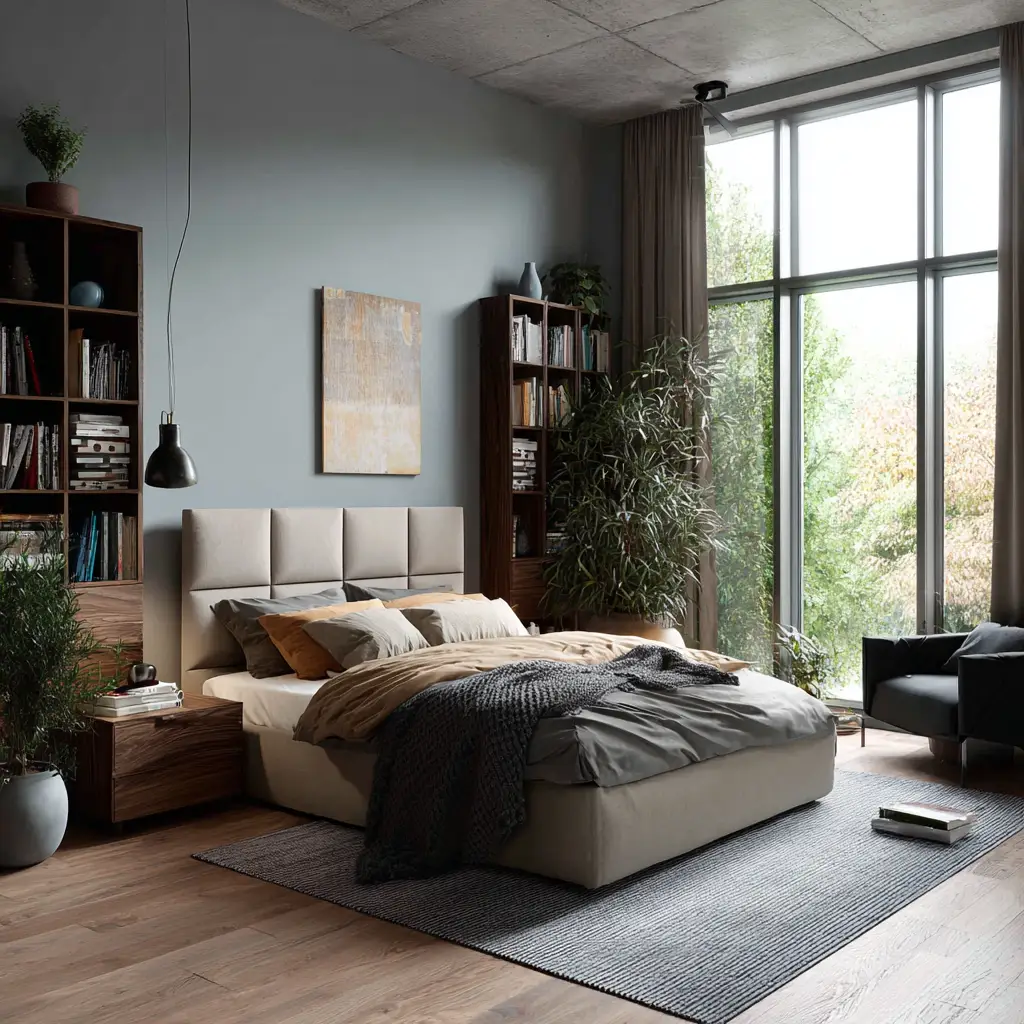
1. Use Light Colors to Open Up the Room
Light colors have a powerful way of making spaces feel larger and more open. Shades like soft white, pale gray, pastel blue, or even muted blush reflect natural light better than darker tones, creating a bright and airy atmosphere. Consider painting not just the walls, but also the ceiling and furniture in light shades to unify the space. Pair these tones with minimal contrasting accents for balance.
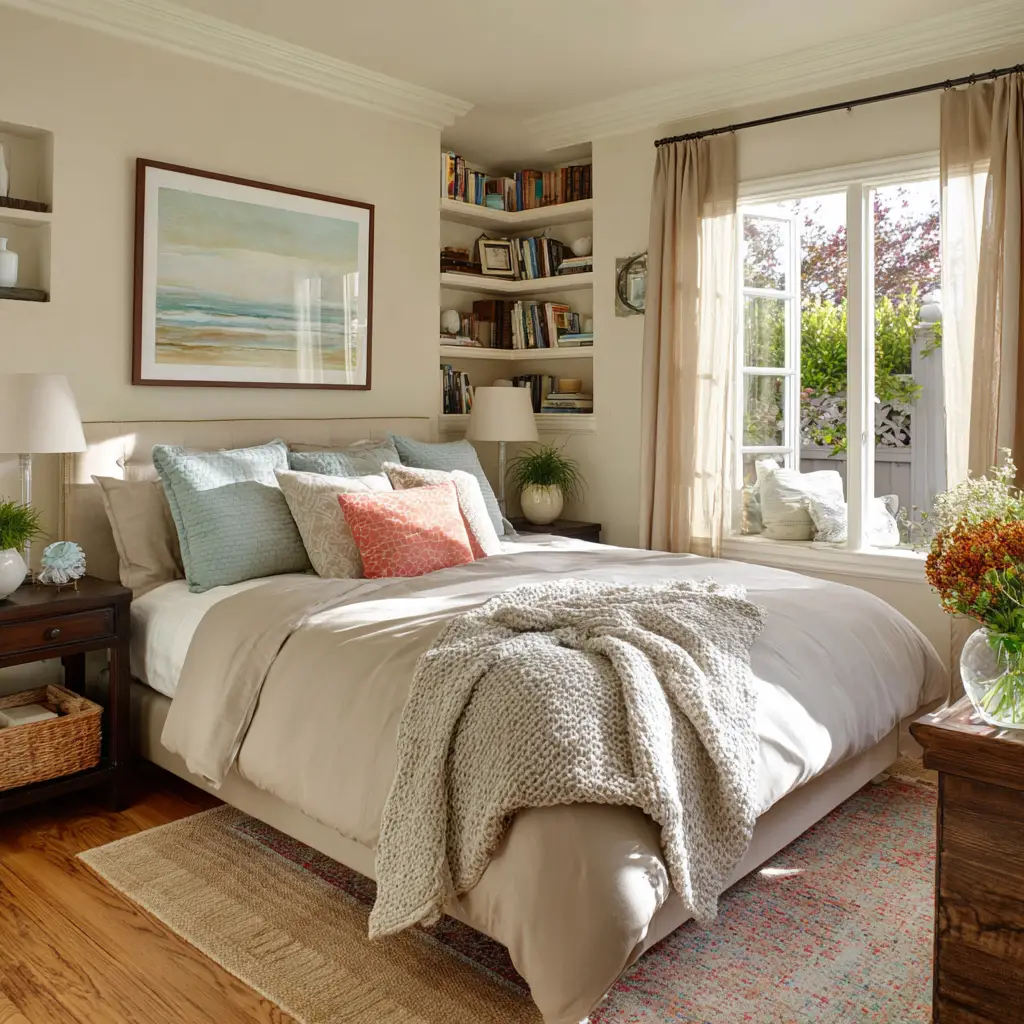
2. Opt for a Low-Profile Bed
A bed that sits lower to the ground allows more visual headroom in the space, making ceilings appear taller and the room less cramped. Platform beds, Japanese-style futons, or even floor mattresses are great choices. These styles add a modern or zen-like aesthetic while making your room feel less crowded and more breathable.
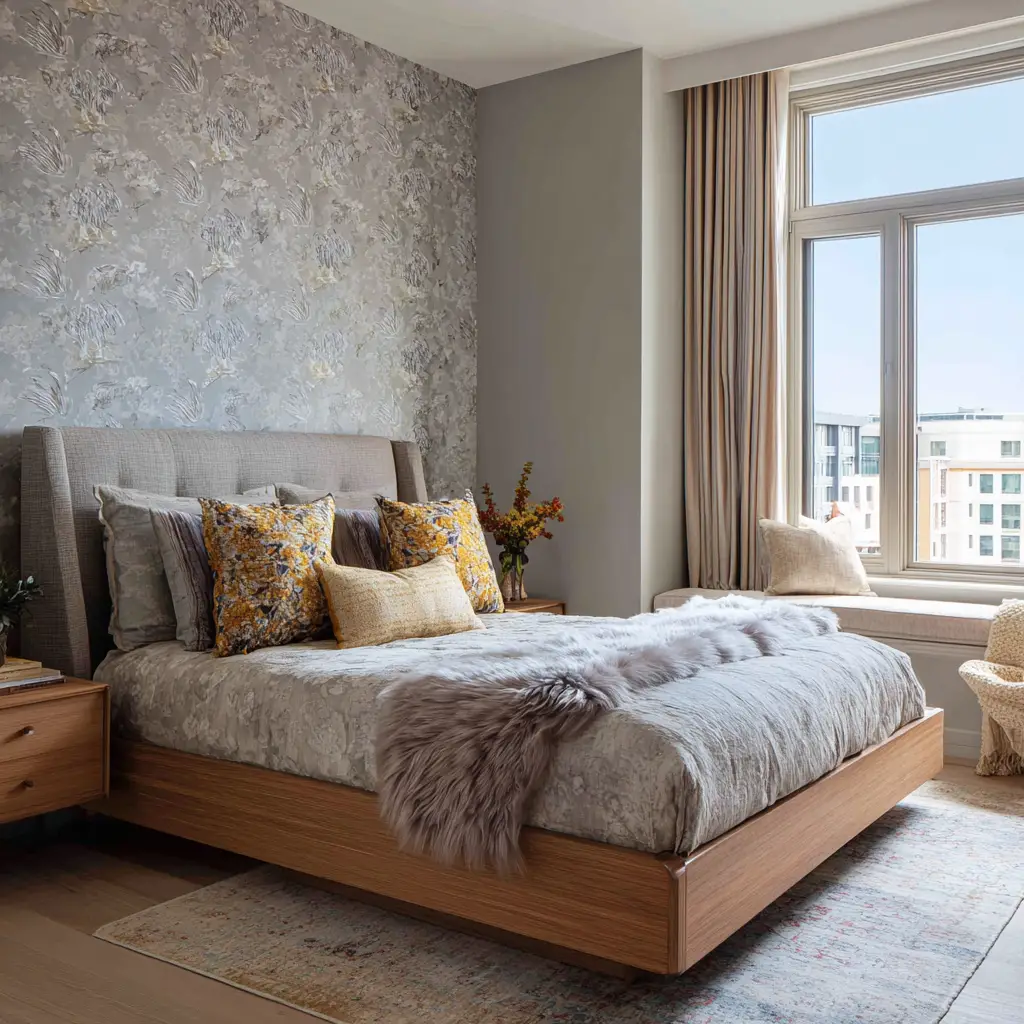
3. Install Floating Shelves
Floating shelves provide excellent storage without consuming valuable floor space. Use them to hold books, small plants, framed art, or storage baskets. You can install them above the bed as a headboard alternative or in corners that typically go unused. Choose wood tones or colors that blend into the wall to maintain a streamlined look.
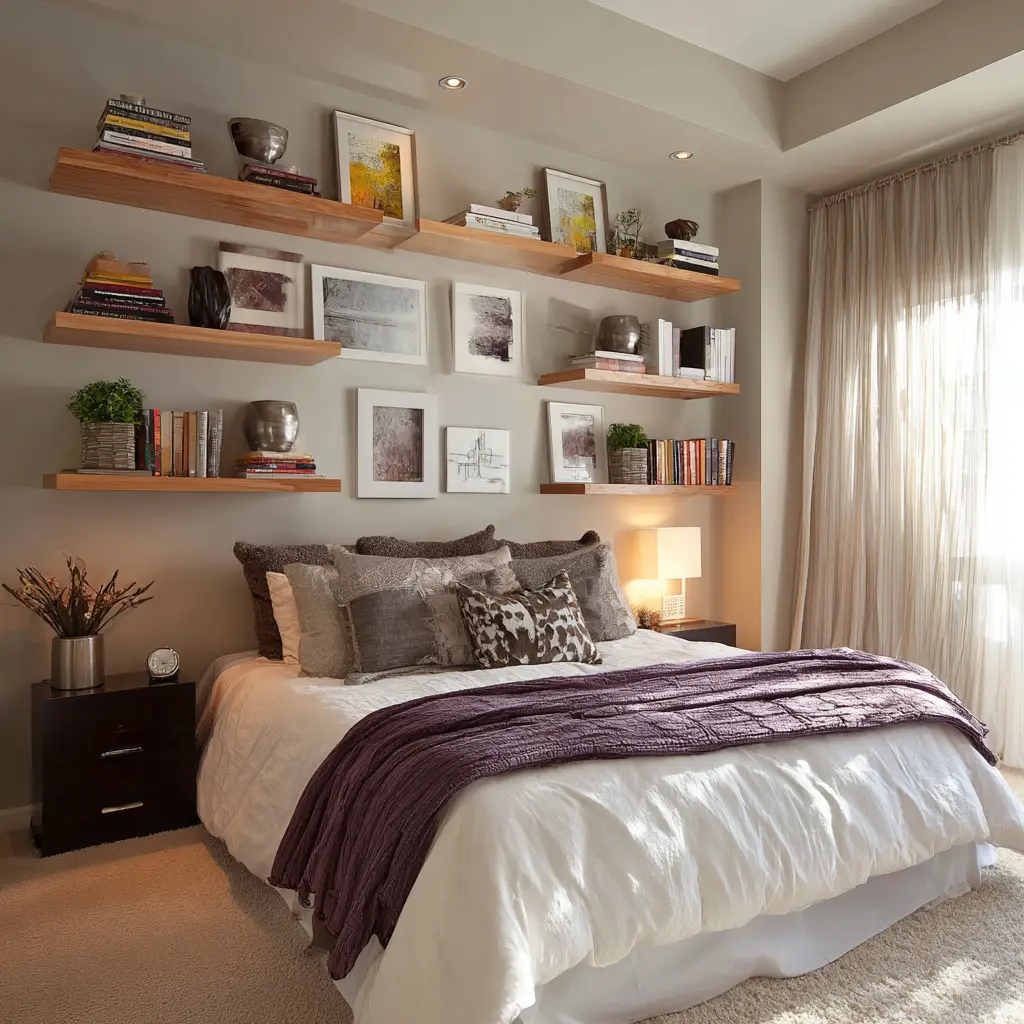
4. Go Vertical with Storage
When you can’t spread out, go up. Use tall dressers, vertical wardrobes, or add shelving units that reach the ceiling to take advantage of unused vertical space. Over-the-door organizers, pegboards, or vertical wall hooks can store accessories, hats, or even shoes. This approach keeps the room feeling organized without taking up horizontal space.
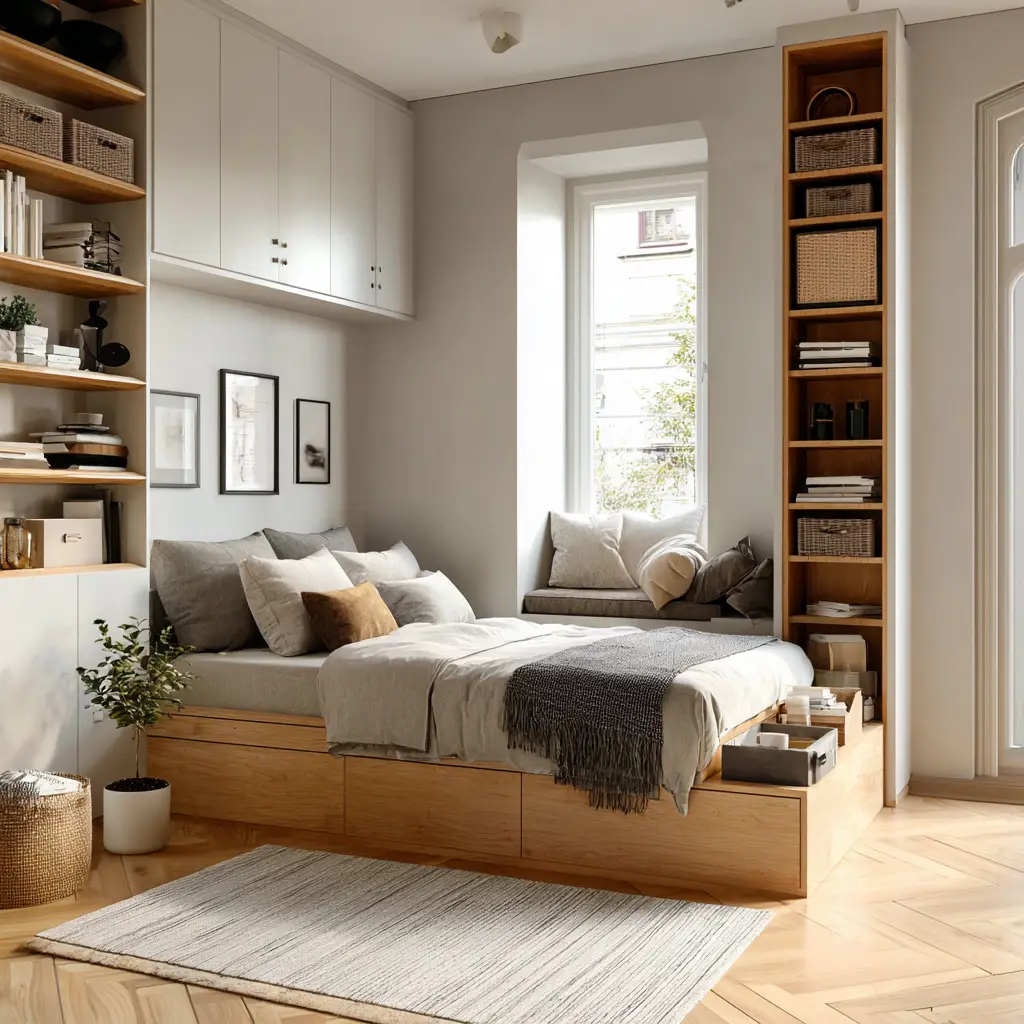
5. Choose Multipurpose Furniture
In a small room, every piece of furniture should earn its place. Opt for beds with built-in drawers, a nightstand with storage, or a bench that opens for extra linens. Consider a vanity that doubles as a desk or a trunk that serves as both seating and storage. This keeps the room clean and functional without overcrowding it.

6. Use Mirrors to Reflect Light
Mirrors are a classic trick for making small rooms feel bigger. A large floor mirror or a wall mirror placed opposite a window reflects natural light, brightening the room and creating the illusion of added space. Mirrored closet doors or furniture pieces with reflective surfaces can also enhance light distribution and depth.
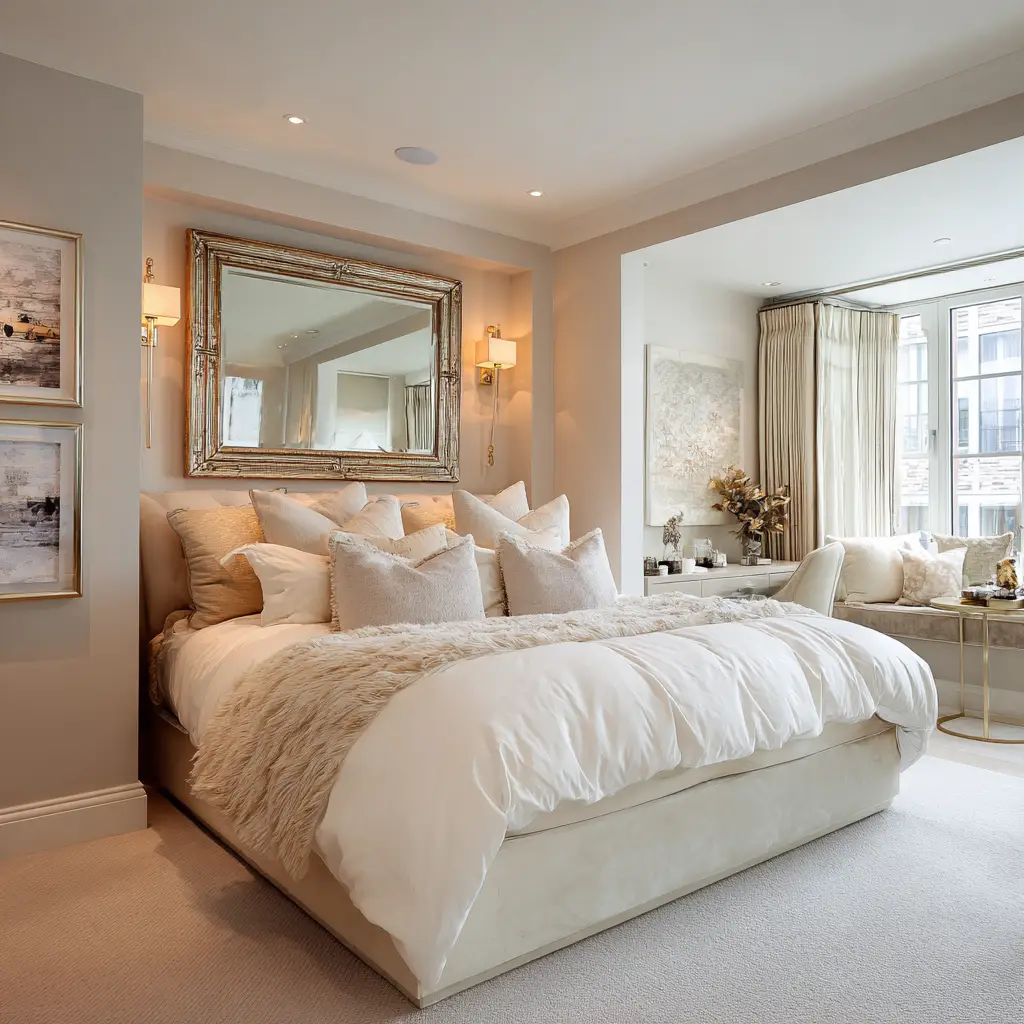
7. Add a Wall-Mounted Desk
If you need a workspace in your bedroom, choose a wall-mounted or fold-down desk. These space-saving designs free up floor area and can be tucked away when not in use. Some styles even come with built-in shelves for extra storage, making them perfect for students or work-from-home setups in tight quarters.
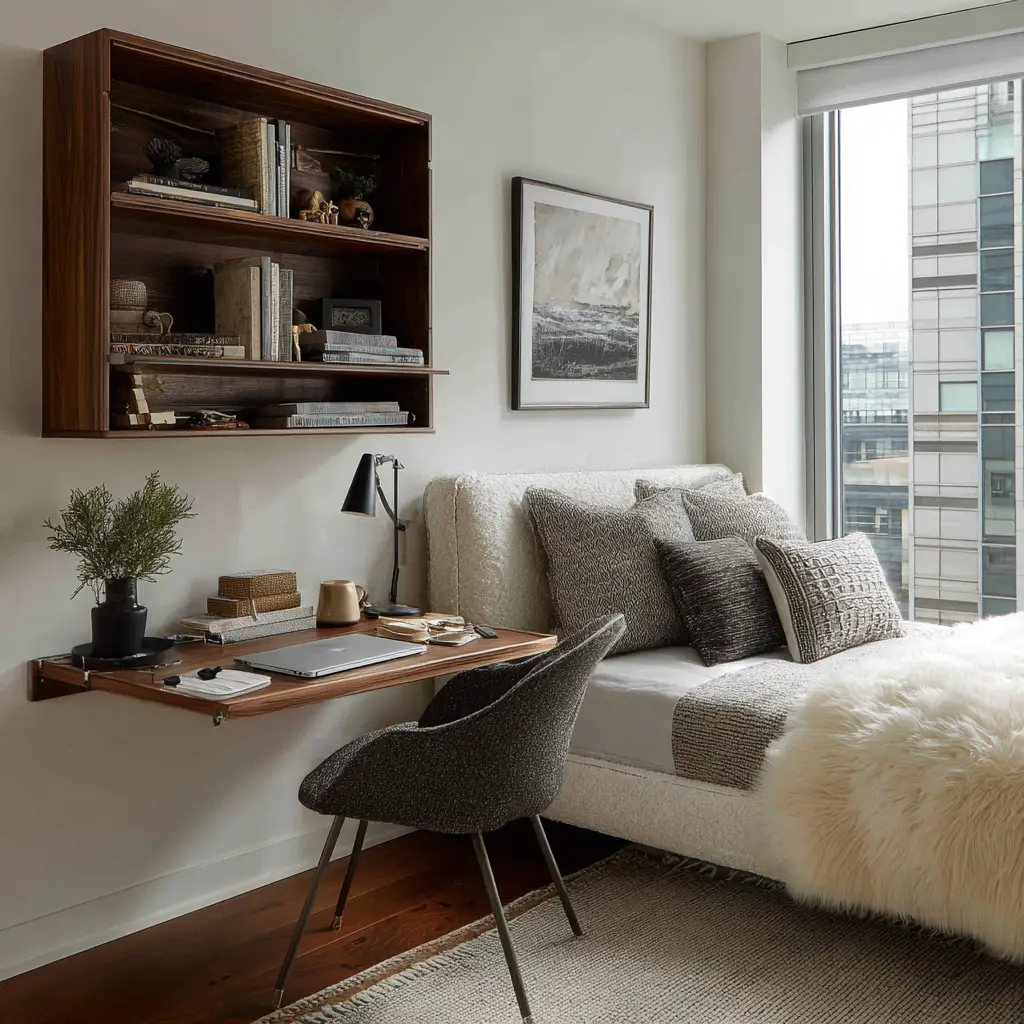
8. Hang Curtains High and Wide
Installing curtains higher than the window frame (closer to the ceiling) and extending the rods beyond the edges makes windows appear larger and rooms feel taller. Opt for lightweight, sheer curtains that allow natural light to filter in, which further enhances the room’s sense of openness and serenity.
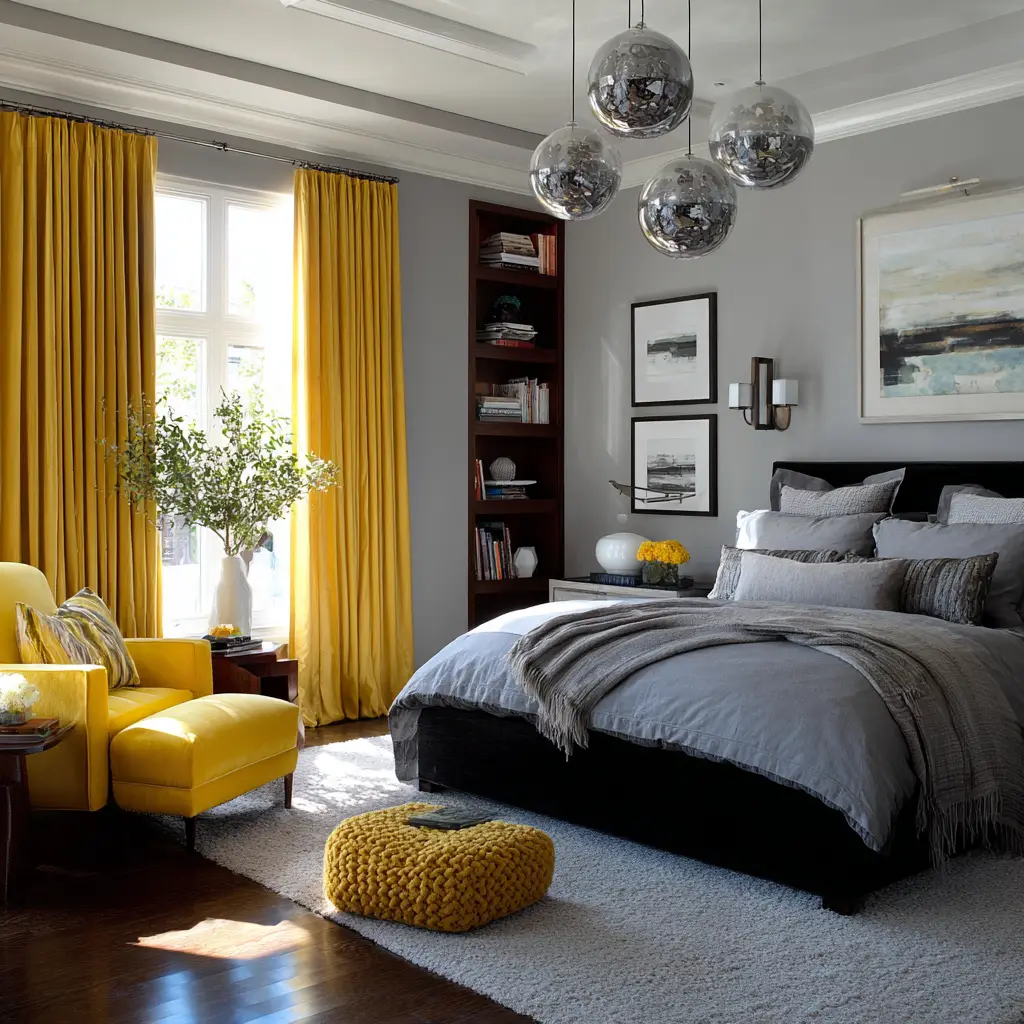
9. Downsize Your Nightstand
A traditional bedside table may be too bulky for a small room. Instead, use a small stool, a wall shelf, or even a stack of books to hold your essentials like a lamp, phone, or glass of water. Hanging a wall sconce in place of a lamp further frees up space on your nightstand alternative.
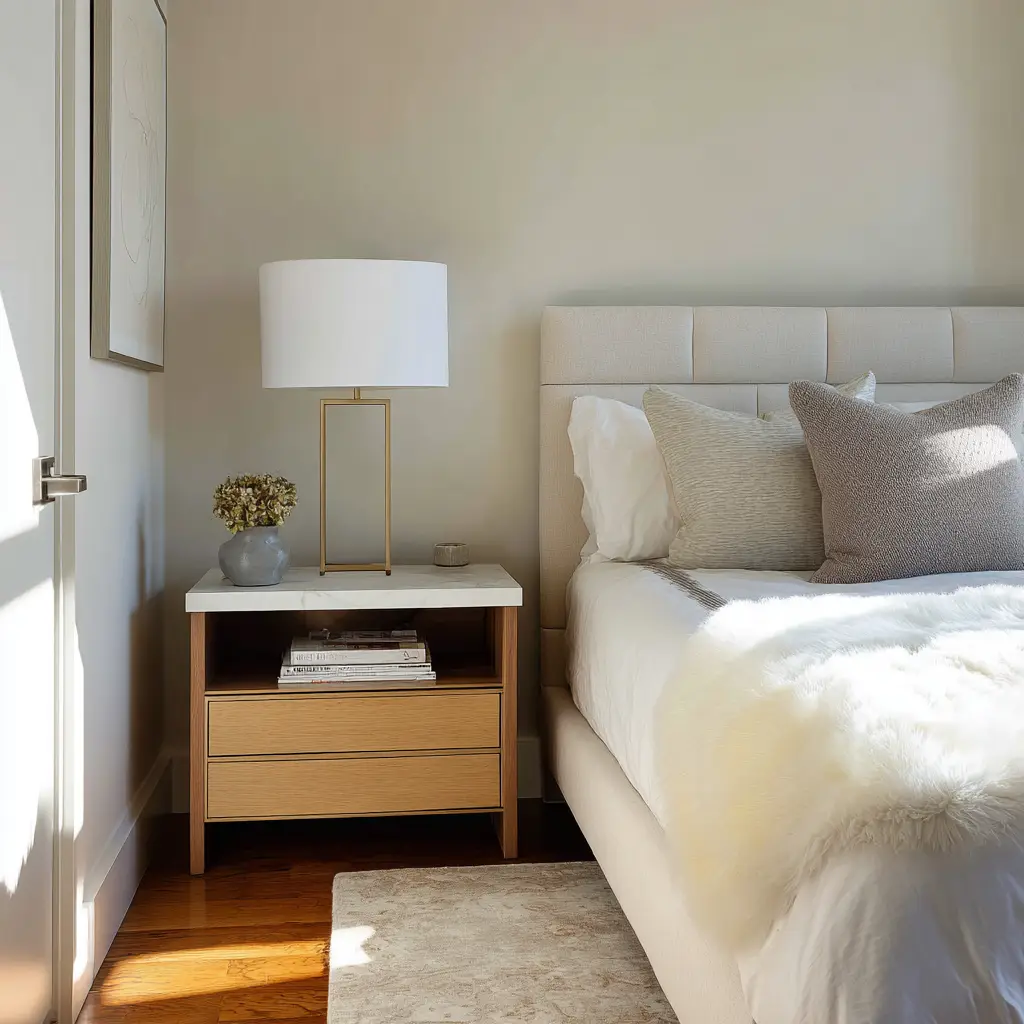
10. Keep Clutter to a Minimum
Clutter shrinks a room, both physically and visually. Adopt a minimalist mindset: keep only what you use or love. Store seasonal items out of sight, and use baskets or boxes to corral small items. By reducing visual noise, your small bedroom will feel more peaceful and spacious.
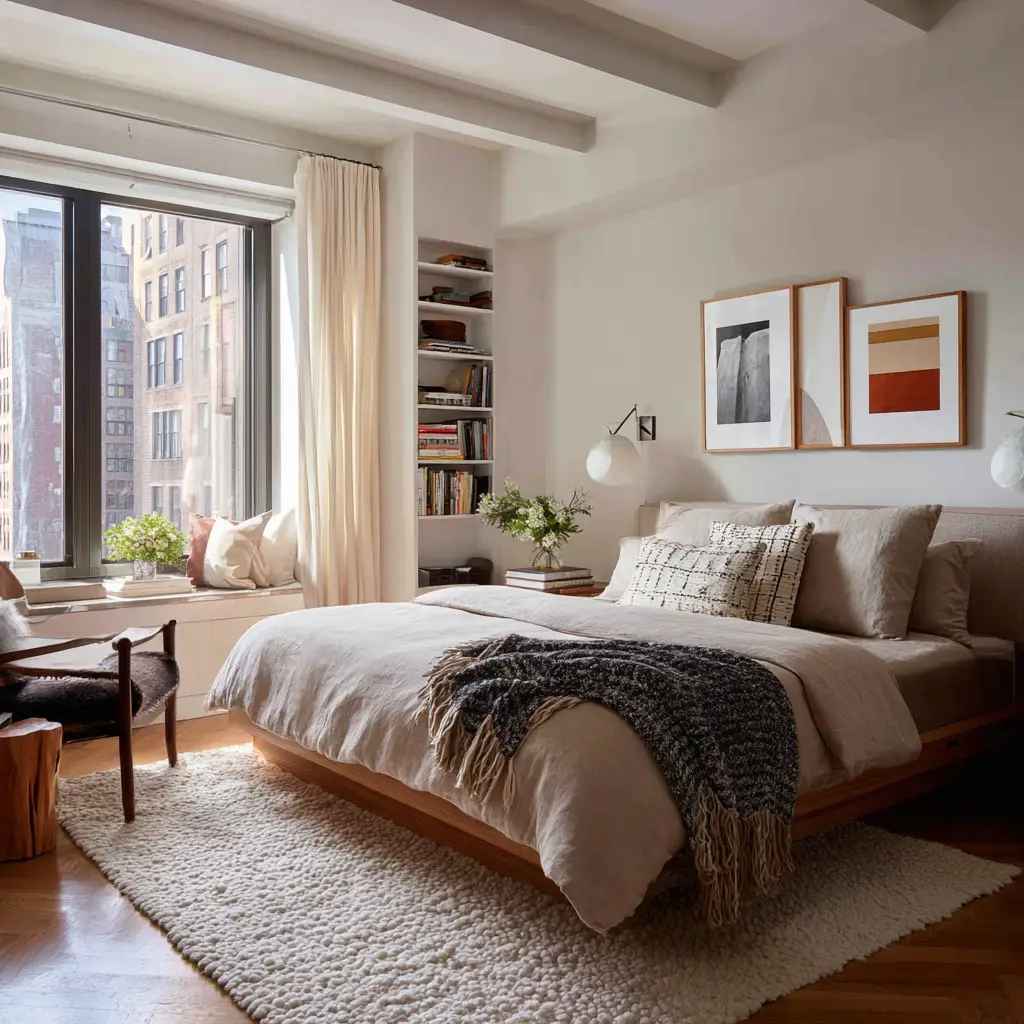
11. Add Soft Lighting
Overhead lighting can feel harsh and clinical in a small room. Instead, layer soft lighting using sconces, string lights, and small pendant lamps. These add warmth and ambiance while taking up little or no surface area. Use dimmable bulbs for more control over mood and functionality.
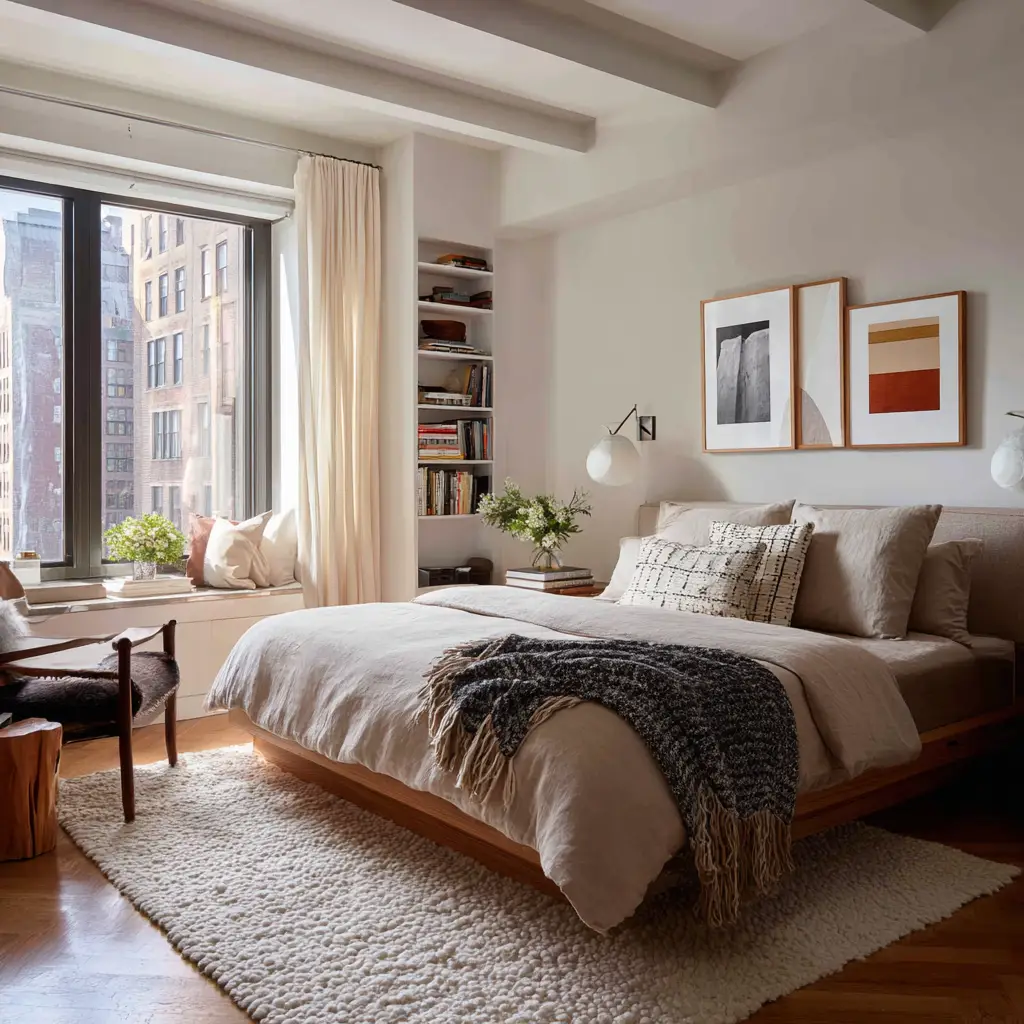
12. Embrace Under-Bed Storage
The area under your bed is prime real estate for storage. Use rolling bins, lidded boxes, or even vacuum-sealed bags to store off-season clothing, bedding, or shoes. If your bed doesn’t offer clearance, consider bed risers to create space. This keeps the room clutter-free and efficient.
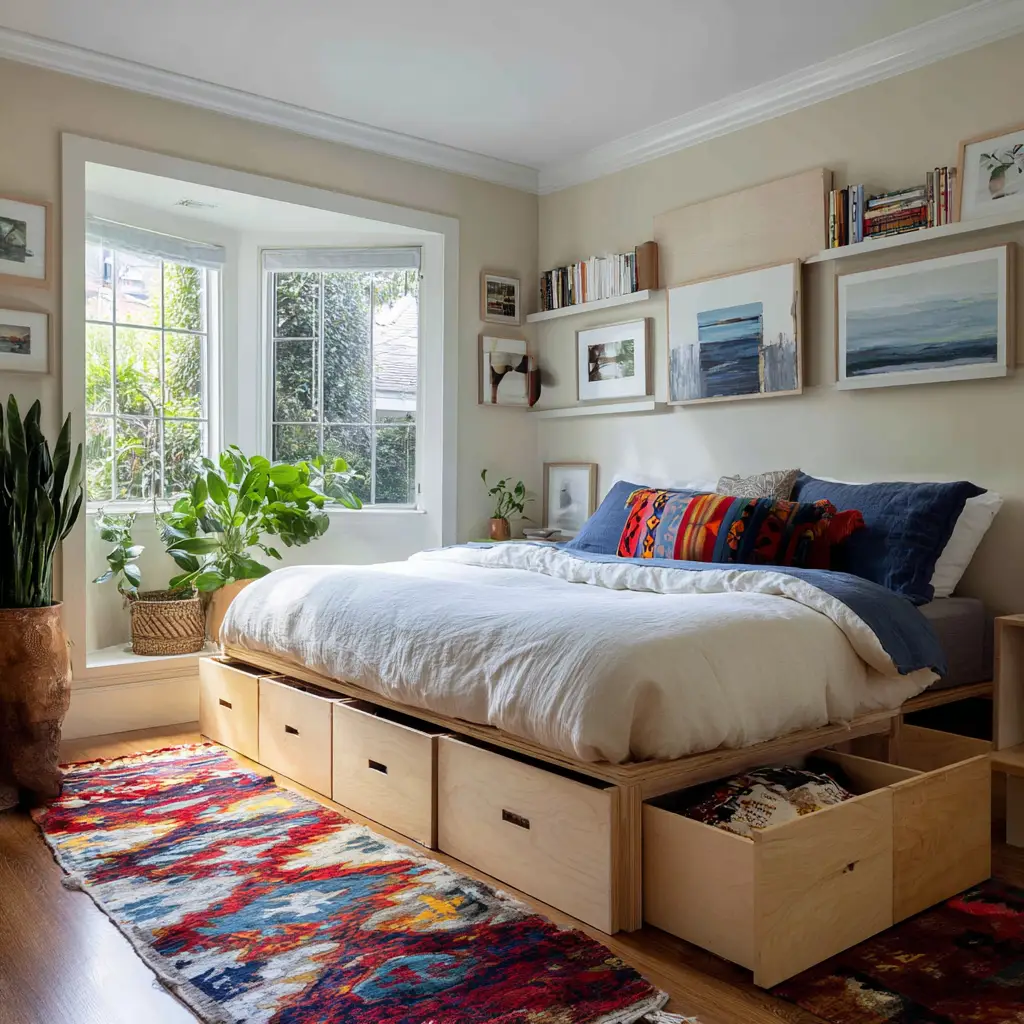
13. Paint the Ceiling
A painted ceiling in a soft hue—like sky blue, blush, or pale lavender—can draw the eye upward and make the room feel taller. This subtle design element adds depth and personality while enhancing the room’s visual interest. Avoid dark ceiling colors, which can make the room feel closed in.
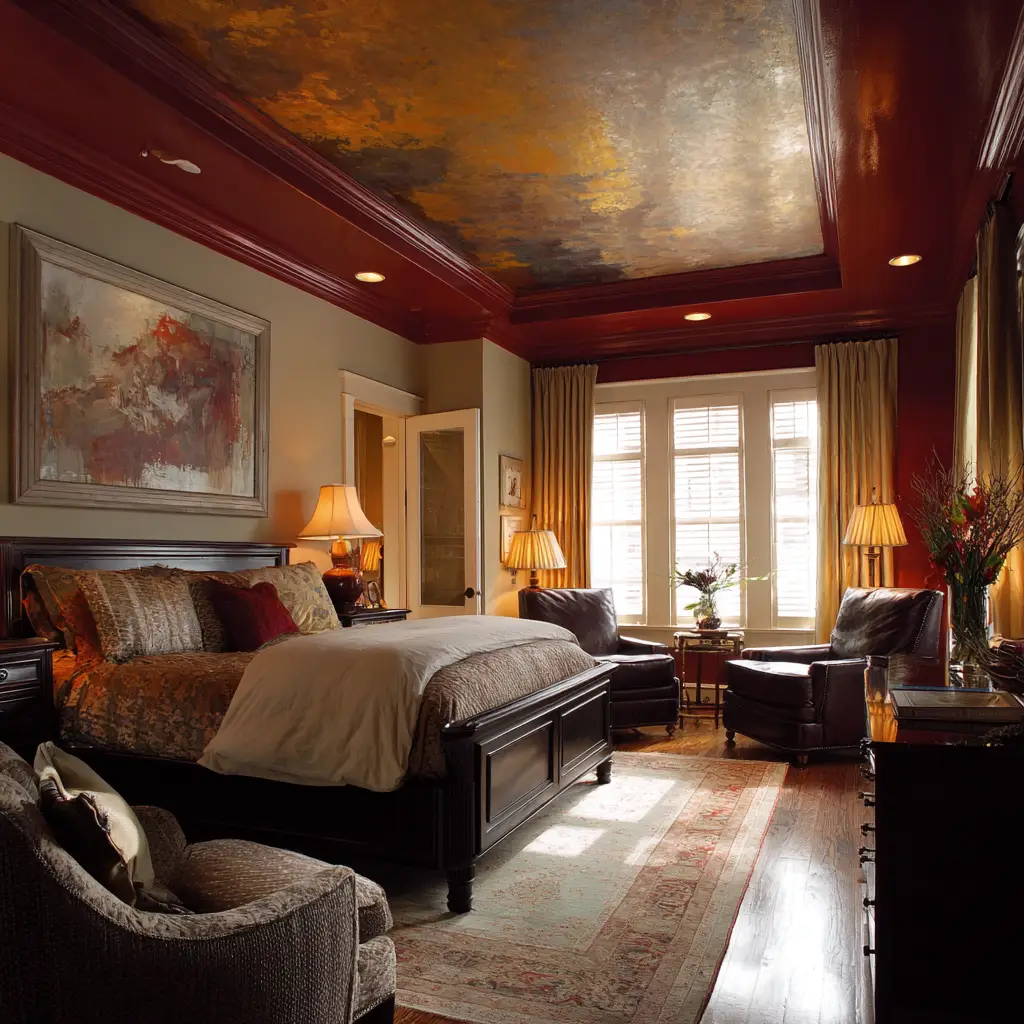
14. Use Foldable or Stackable Furniture
Furniture that can fold away or stack when not in use is a game-changer in small rooms. Consider a foldable desk, collapsible chairs, or nesting tables. These options are particularly helpful in guest bedrooms or multipurpose spaces where flexibility is key.
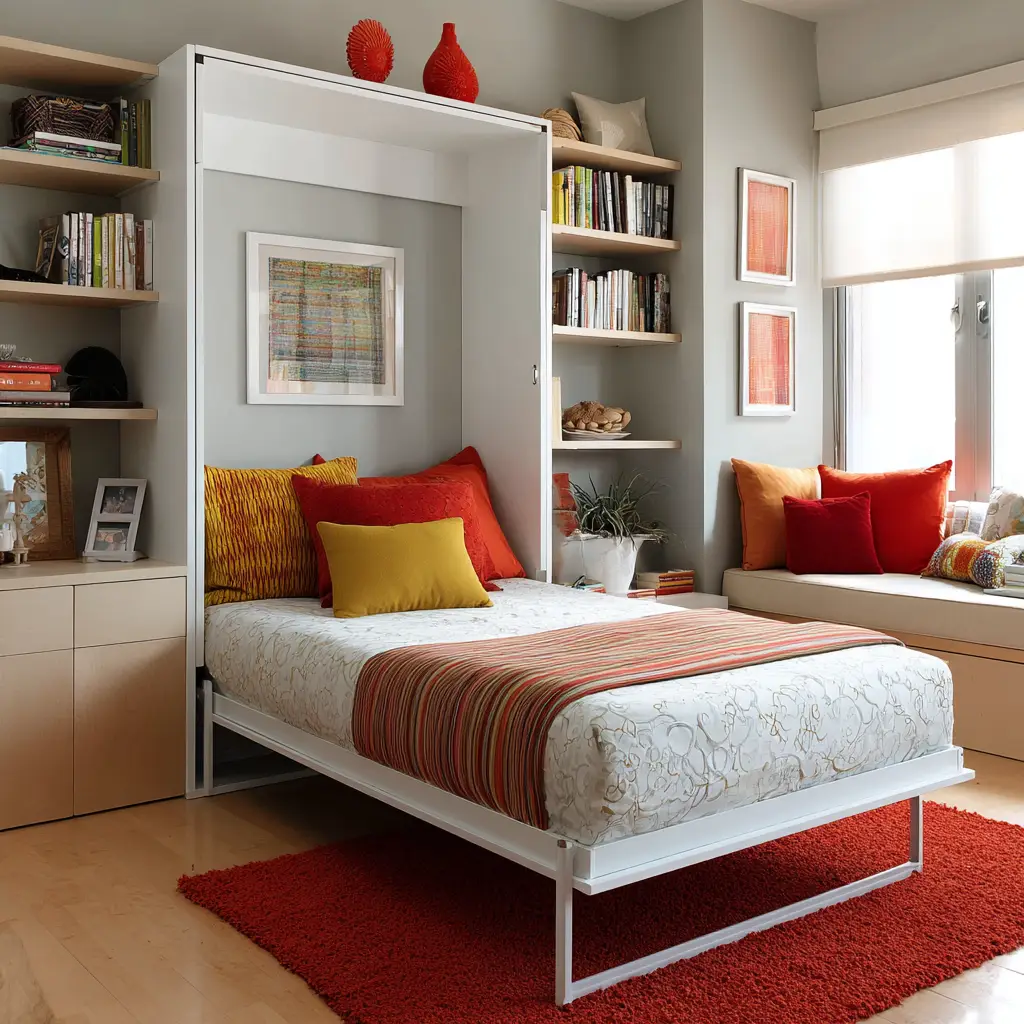
15. Create a Feature Wall
Add character to your small bedroom by creating a feature wall with wallpaper, textured paint, or a gallery of framed photos. Keeping it to one wall prevents the space from feeling busy while still showcasing your personal style. This can also visually anchor the bed or seating area.
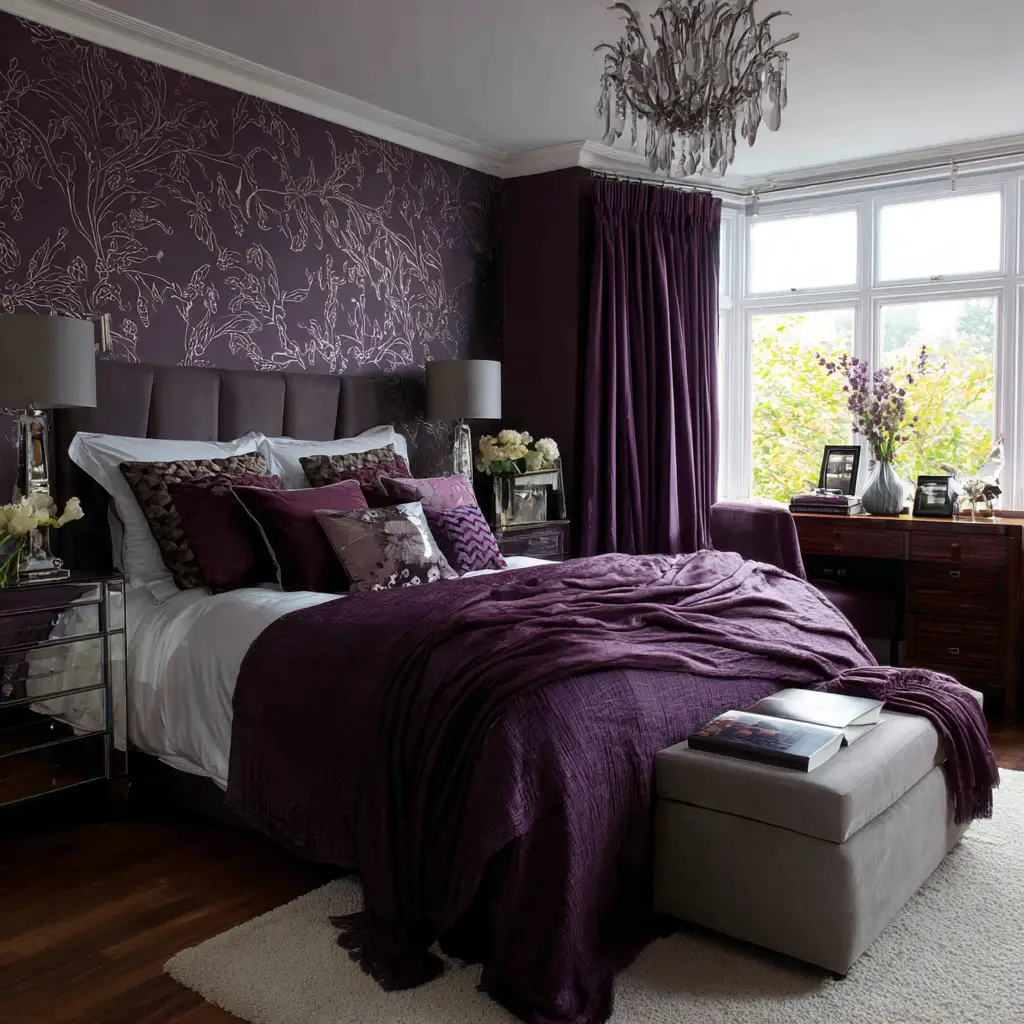
16. Install Pocket or Sliding Doors
Traditional doors need swing space, which is limited in small rooms. Pocket doors or barn-style sliding doors save that space and offer a sleek, modern aesthetic. They’re great for bedroom closets or en suite bathrooms where space is at a premium.
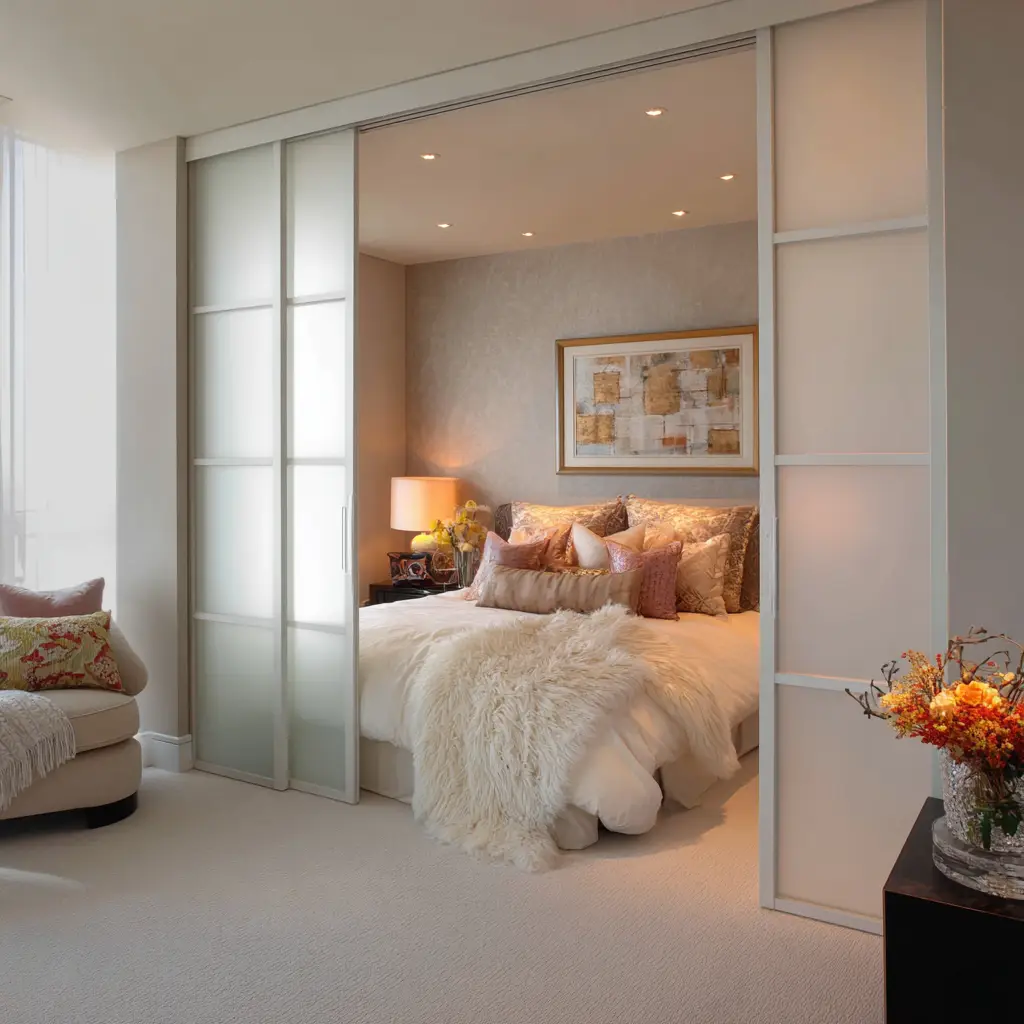
17. Choose a Bed with an Open Frame
An open bed frame with slim legs or metal bars allows light and air to flow underneath, creating a more open feel. Avoid bulky bed bases that sit flush with the floor, as they can visually weigh down the room. A canopy bed with sheer curtains can add drama without bulk if space allows.
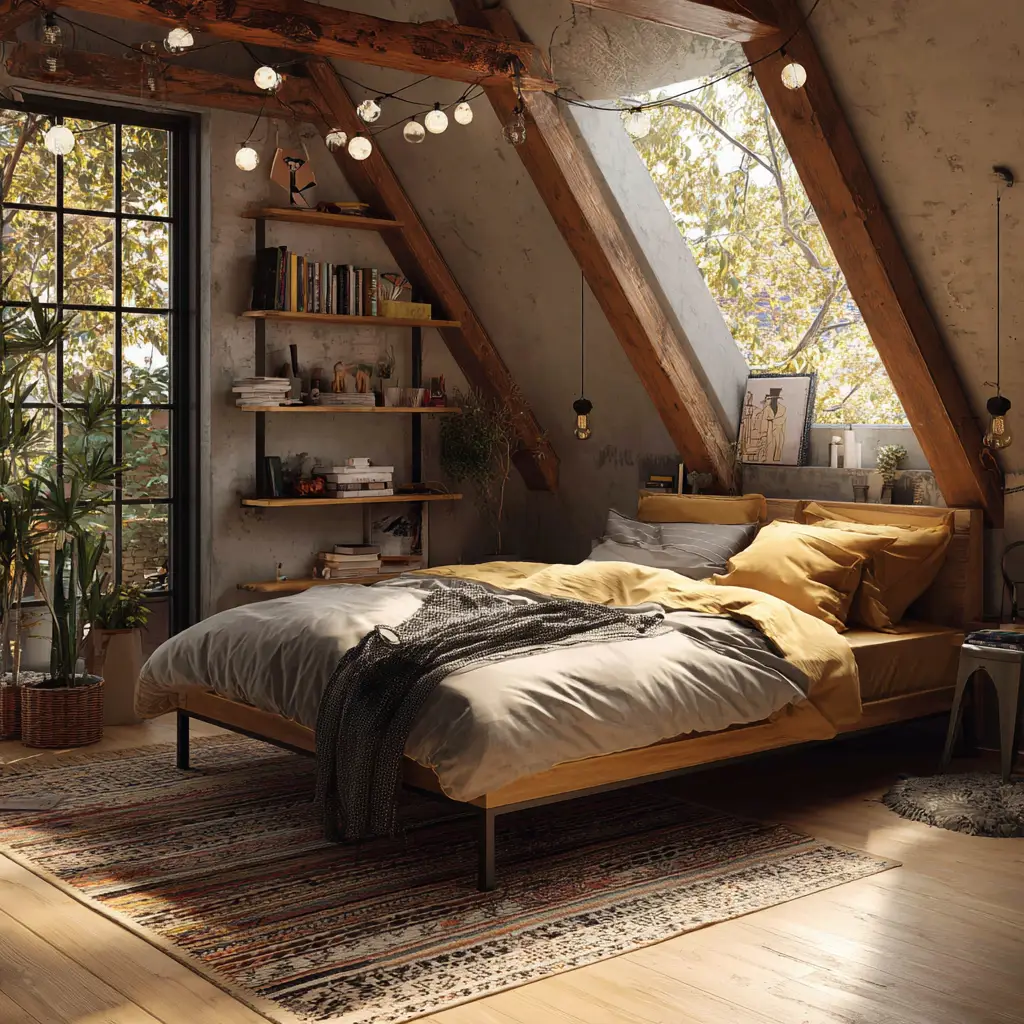
18. Incorporate Built-In Wardrobes
If you’re renovating or building, consider built-in wardrobes that blend seamlessly into the walls. These custom options make the best use of awkward corners or narrow walls, providing sleek storage without protruding into the room. Sliding doors make them even more space-efficient.
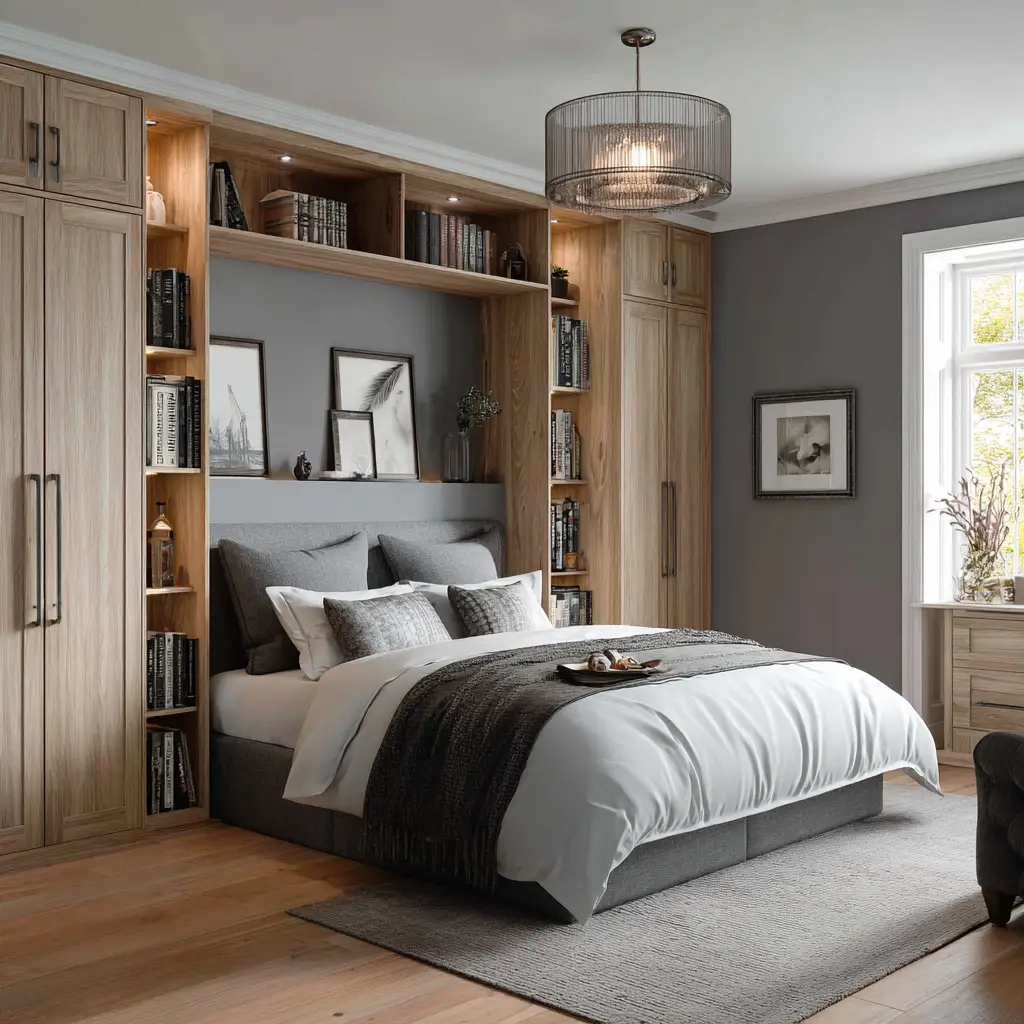
19. Use Corner Space Wisely
Every corner in a small bedroom has potential. Add a corner desk, hanging corner shelves, or even a compact armchair to create a cozy reading nook. Using these awkward spaces for function or style can free up more central space for other furniture.
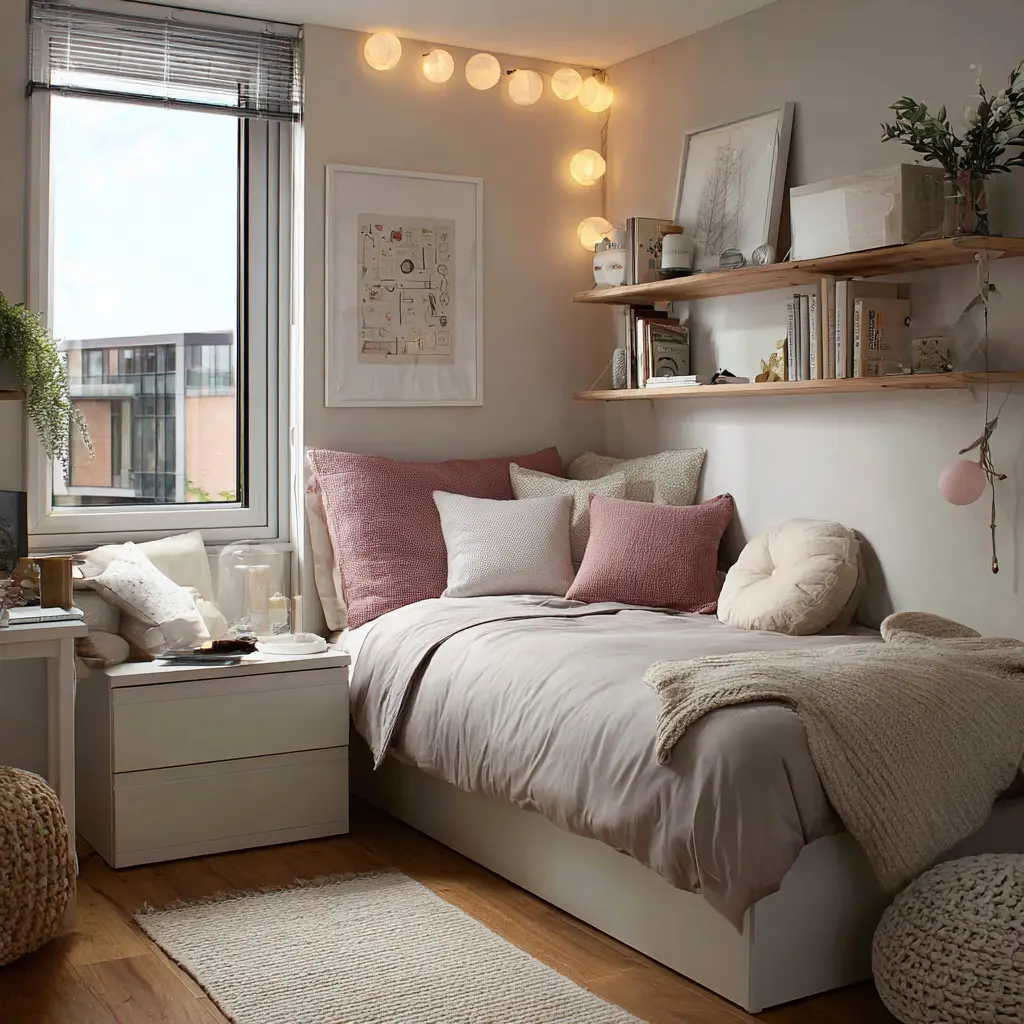
20. Keep a Cohesive Color Palette
Using a consistent color palette throughout your bedroom helps create a calm, unified look. Stick to two or three complementary tones and repeat them in your bedding, walls, furniture, and accessories. A cohesive scheme prevents the space from feeling chaotic or overcrowded.
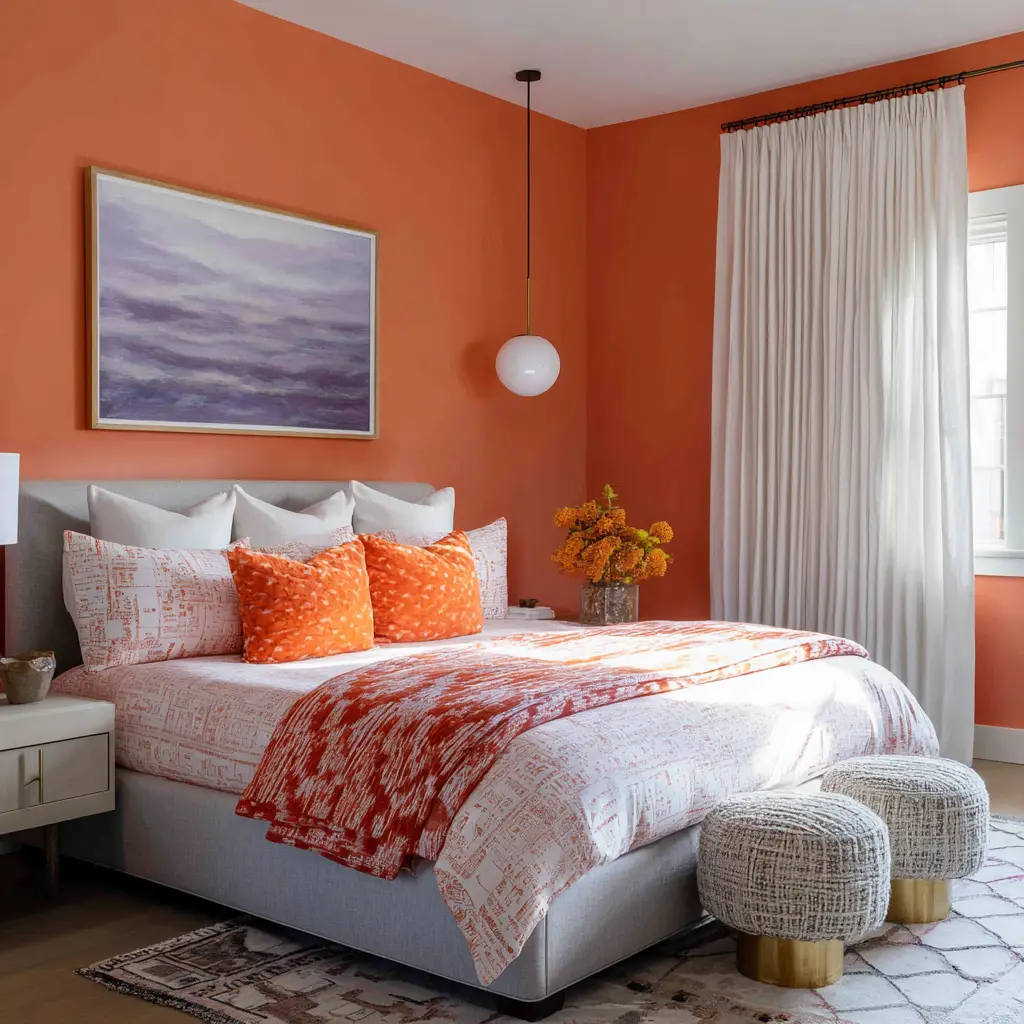
FAQs
How do I make a small bedroom feel bigger?
Maximize light with light-colored walls and reflective surfaces like mirrors. Keep the space clutter-free and choose furniture with open or minimalist designs. Visual tricks like tall curtains, vertical storage, and low-profile beds can also make a big difference.
What kind of bed is best for a small room?
A platform bed with built-in drawers, a Murphy bed, or a daybed are ideal for small spaces. These options reduce bulk and offer extra storage or flexibility for guests and multipurpose rooms.
Can I still decorate a small room with personality?
Definitely! Focus on smaller décor items like art, throw pillows, textiles, or an accent wall. The key is choosing pieces that reflect your style without adding visual clutter. A single standout element—like a unique headboard or patterned rug—can go a long way.
How do I add storage without overcrowding?
Think vertically and use hidden storage. Tall shelves, under-bed storage, and multipurpose furniture are your best friends. Make use of overlooked areas like the back of doors, corners, and wall space near the ceiling.
Are dark colors bad for small bedrooms?
Not necessarily. While light colors are generally better for expanding a space, dark tones can create a cozy and dramatic vibe if used carefully. Try limiting them to one feature wall or pairing them with lighter accents to maintain balance.
Conclusion
Designing a small bedroom is all about making intentional choices. By focusing on function, smart storage, and visual balance, you can turn even the smallest space into a peaceful, practical retreat. Don’t be afraid to think vertically, let go of unnecessary items, and experiment with layout ideas that challenge traditional room setups.
